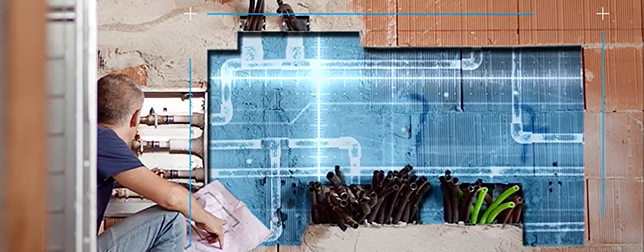Vayyar Imaging, an Israel-based company, has created a device with “Superman vision” that can literally see through solid objects. The device, which is actually a powerful sensor, uses radio frequencies to detect movement and, it can also tell the difference between humans and objects.
“People are amazed by it,” Raviv Melamed, Co-Founder and CEO of Vayyar says. “They think it’s science fiction.”
“Radio wave imaging is a powerful technology, which was dormant for many decades. Vayyar’s new sensor is finally unleashing its potential.”
Read more Run Angel – Personal Safety Wearable Designed to Keep Women Safe
The trick to this tiny matchbox-sized sensor is combining more antennas onto a single chip, making it more powerful but also lighter and smaller.
A single chip contains 72 transmitters and 72 receivers; typically 3 transmitters and 3 receivers are seen on an average chip. The new chip covers imaging and radar bands from 3GHz to 81GHz, executing complex imaging algorithms, and differentiate between humans and solid objects.
While the new chip may seem fantastical to some, it has numerous practical uses when applied to the fields of robotics, breast cancer imaging, elderly care, retail, and more.
Vayyar’s most recent product is a sensor that monitor homes. The device, which according to Melamed, can tell if a person is sitting, lying down or walking, is geared towards elderly care field.
“Elderly people don’t typically want to wear a device because they don’t want to be symbolized,” Melamed said, referring to the wearable devices currently available in the market.
Melamed said the idea of technology using radio frequencies is less intrusive than a home system with video monitoring devices.
Read more This Tiny Tooth Sensor Could Track Your Diet and Health
“People want to be free in their own home,” said Melamed. “They don’t want to feel like they’re being watched.”
The image provided by the new device is only a hazy resemblance of a person or object, and it is a key selling point when it comes to home-monitoring devices, according to Melamed.
The image is of low resolution; when seeing the image one would be able to recognize a person’s head or hand, but he or she won’t be able to recognize the face.
Melamed left his previous job developing radars for the Israeli Defense Forces and started working on his new company from his Tel Aviv basement seven years ago.
“There’s enormous scale for this device,” he said, “Highly sophisticated radar can solve a multiple of problems in many industries.”













